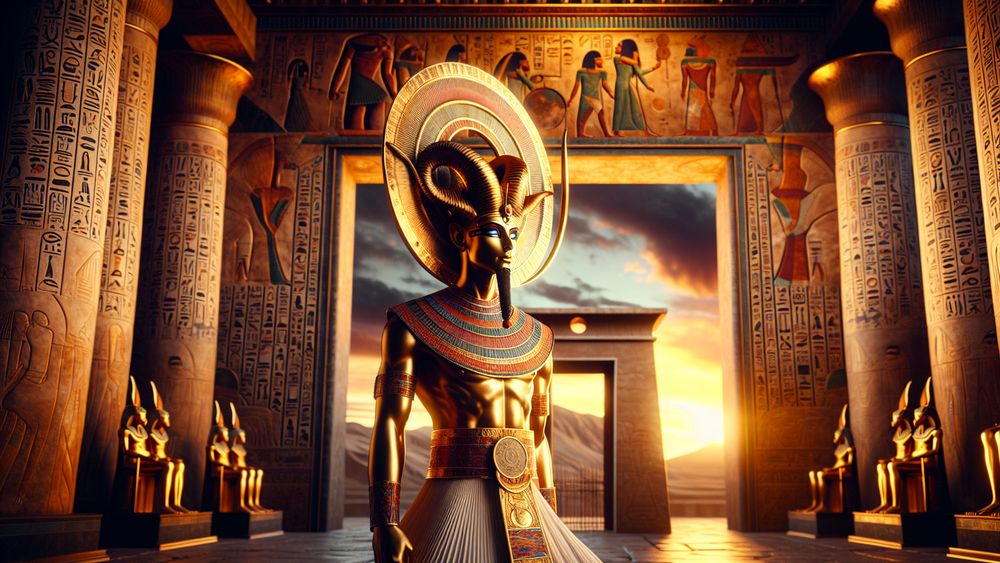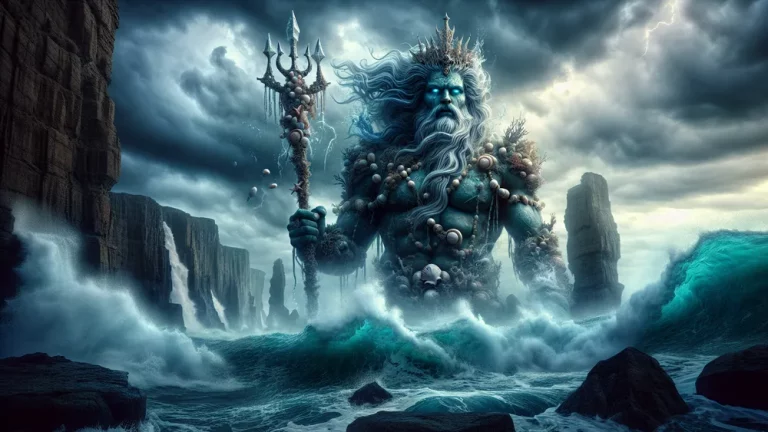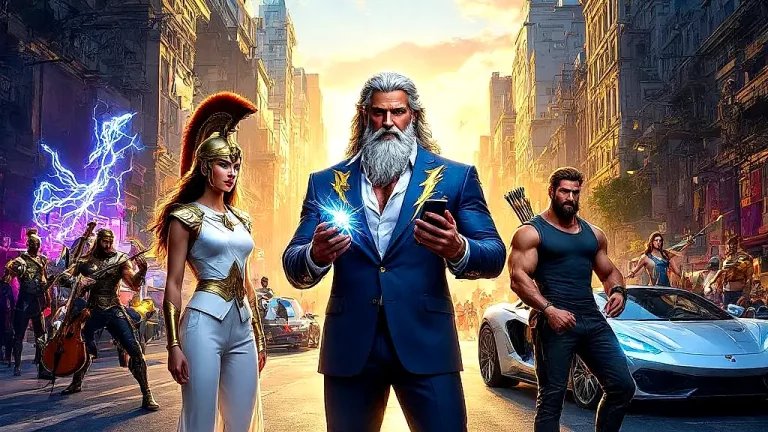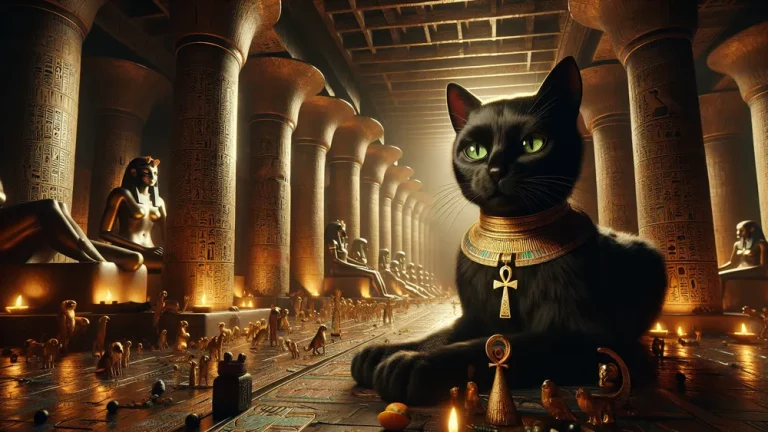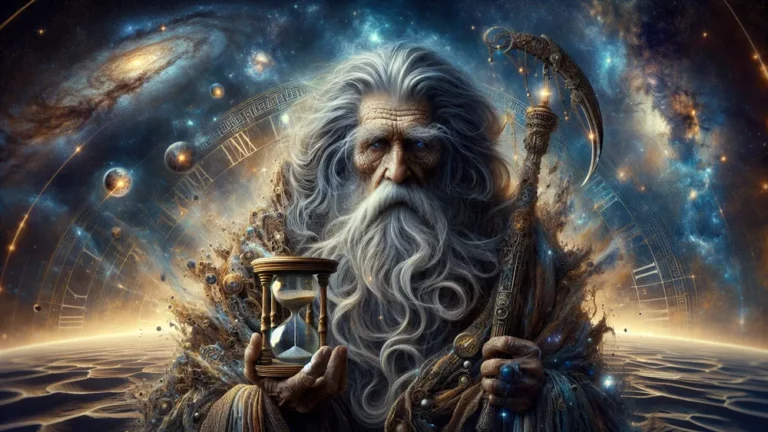Amun: Ancient Egyptian God Of The Sun And Air
Amun starts off as a somewhat minor figure, mainly about the sun and air. Yet, he climbs the ranks to become a top-tier god in the ancient Egyptian spiritual lineup. His fan base really kicks off in the Old Kingdom but hits its peak during the Middle and New Kingdom periods. This is when Thebes steps up as the go-to place for all-things Amun.
Key Points:
- Amun, an ancient Egyptian god, rose to prominence by being worshipped in Thebes and later joining forces with the sun god Ra to become Amun-Ra.
- The integration of Amun and Ra reshaped Egyptian religious practices, allowing for the mixing and matching of gods which was encouraged.
- The Karnak and Luxor temples in Thebes were key centers of worship for Amun and played a vital role in ancient Egyptian society and economy.
- Festivals and rituals dedicated to Amun, such as the Opet Festival, strengthened the bond between the people and the god, reinforcing societal and cosmic order.
- The priests of Amun held substantial power and influence in ancient Egyptian politics, guiding pharaohs and managing resources for the temples.
- The challenge from Pharaoh Akhenaten’s monotheistic reforms threatened Amun’s cult, but after his reign, traditional religious practices and the worship of multiple gods, particularly Amun, made a strong comeback.
- Amun’s influence extended to regions outside Egypt, particularly in Nubia and Sudan, where he was worshipped and integrated with local deities, demonstrating the flexibility and widespread impact of his worship.
Then, there’s this game-changing moment when Amun and Ra, the sun god, decide to join forces. They create Amun-Ra, which is like getting the best of both worlds. This combo move is a huge hit and reshapes Egyptian religious vibes, making it clear that mixing and matching gods is totally okay and even encouraged. So, what comes next? Big temples, fancy rituals, and festivals that everyone looks forward to.
These aren’t your average get-togethers but key moments that bring people and the divine into close contact. And let’s talk about the priests. They’re more than your regular clergy; they’re power players in society and politics, holding onto wealth and influence like it’s going out of style. In short, Amun’s story isn’t just about a god making it to the top.
It’s about how flexible and dynamic the spiritual scene in ancient Egypt is. It’s about connections – between gods, people, and power. And as we jump into this tale, remember, it’s a ride through time and belief, where one god manages to become a central figure for centuries, both inside Egypt and far beyond its borders.
The Origins and Rise of Amun
We’re zoom in on how Amun, initially a deity with a local following, transforms. He becomes a key figure within the ancient Egyptian divine lineup.
Who is Amun and How Did He Become a God?
So, let’s talk about Amun. He starts off connected to sun and air. These are super key for staying alive and for food in that old Egyptian world. His fan club kicks off in the Old Kingdom but really gets going later. Especially when Thebes steps up its game.
Thebes getting all powerful makes Amun a big shot, moving him from a local celeb to a nationwide superstar. This shift means more temples for him and more rituals where people celebrate him. This makes him a regular part of both everyday life and the bigger state events in ancient Egypt.
Thebes is where it’s all happening for Amun, making him the top god.
- Thebes is where everyone celebrates Amun as the boss of all gods.
- They build massive places like Karnak and Luxor for him, which are huge for religion and for making money.
- Then, Amun gets linked with Ra, which is another top-tier god. This combo creates Amun-Ra, which mixes their powers and makes Amun even more of a VIP in the god world.
So, we see Amun climbing the ranks, thanks to where he’s worshipped and who he teams up with. It’s all about location and connections for him.
Amun rises to godly stardom in ancient Egypt due to his association with Thebes and Ra, which boosts his status and popularity.
Amun’s Integration with Ra and the Creation of Amun-Ra
When Amun and Ra come together, they form Amun-Ra. This is a huge moment for the people of ancient Egypt because it brings two very powerful gods into one super powerful god. They did this for a couple of reasons. On the one hand, for their beliefs, it made sense to mix the gods together. They often do this to make their pantheon of gods feel more complete.
On the other hand, for their leaders, it was a smart move. It put together the god that the city of Thebes really liked (Amun) with the sun god (Ra) that everyone in Egypt thought was very powerful because he made life possible.
So, Amun-Ra ends up being this top-tier god who has control over so much – like the wind and air, the sun, and making sure crops grow. He gets to be known as the king of all gods and gets credit for making the world and keeping everything in order. This really cements his spot as the most powerful god in the minds of the people.
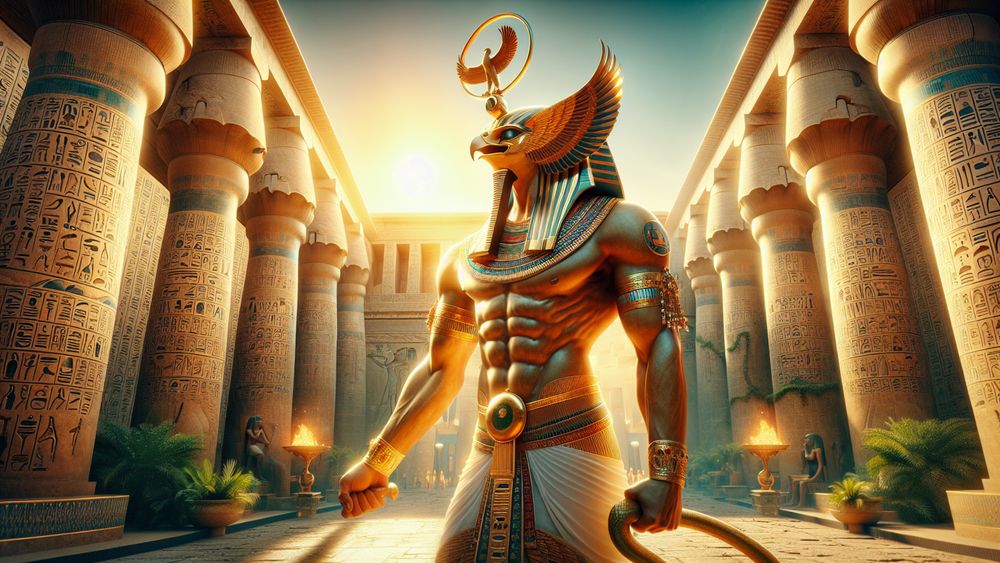
The Worship and Cult of Amun
After establishing Amun-Ra as a key figure in the religious landscape of Egypt, we now turn our attention to the ways people showed their reverence and celebrated this deity across the land.
The Key Temples and Centers of Worship
So, when we talk about where people went to show their respect for Amun, The Karnak Temple Complex and The Luxor Temple really steal the show. These spots are in Thebes, which was a huge hub for both religion and politics back in the day. Now, Karnak isn’t your average temple; it’s massive and took more than a thousand years to get to its final form.
It’s a mix of temples, chapels, and pylons all connected. Its size and the creativity in its design show us how much Amun-Ra meant to everyone. Then there’s the Luxor Temple, which is super close to the Nile River. While it mainly honored Amun, it didn’t forget about his family, Mut and Khonsu. Together, they were the Theban Triad.
This temple is especially famous for its straight line connection with Karnak and for the path lined with sphinxes that links them. This path was especially key during the Opet Festival when statues of the Theban Triad got a parade between the two temples.
Aside from their stunning looks which drew people from all over, these temples were like the heart of ancient Egypt’s economy and spiritual life. The priests here had a lot of clout, handling rituals and ceremonies which they thought kept the universe in balance, which they saw as Amun-Ra’s job.
These places weren’t poor either; they owned a lot of land which farmers worked on to produce goods for the temple and for trading. This setup helped keep the priests and their work going and paid for building and keeping up all those impressive structures which, in turn, kept society and politics running smoothly.
- Karnak Temple Complex: Not your average religious site; a giant that grew over centuries.
- Luxor Temple: Famous for its yearly Opet Festival which was all about renewals and celebrations.
- Economic Role: More than places for prayers; they were economic powerhouses.
- Priesthood: They had the power, managing everything from daily rituals to keeping the cosmos in check.
Festivals and Rituals Dedicated to Amun
In the time of ancient Egypt, the calendar fills with festivals and rituals that honor Amun. These events act as both religious and societal gatherings that strengthen the connection between the deity and his followers. The Opet Festival shines as the most notable, symbolizing the renewal of kingship and Amun’s divine essence. During this festival, people parade the statues of Amun, Mut, and Khonsu from Karnak to Luxor.
This act signifies unity and strength under Amun’s protection and blessing. Such events are key for keeping both the social and cosmic order in balance. They give a chance for communities to unite in celebration and reverence, which, in turn, bolsters their faith and societal frameworks. Through these festivals and rituals, the bond between Amun and the people refreshes and strengthens.
This emphasizes his role as a guardian and giver of good to both the pharaohs and their subjects. So, here’s a table that lays out the major festivals and rituals for Amun:
| Festival/Ritual | Description | Significance |
|---|---|---|
| Opet Festival | A grand parade from Karnak to Luxor with statues of Amun, Mut, and Khonsu. | Strengthens kingship and divine ties with Amun. |
| Feast of Min | Celebrates harvest and fertility, where Amun gets honored next to Min. | Highlights Amun’s role in bringing fertility and prosperity. |
| Valley Festival | Involves processions in Thebes, celebrating the connection to Amun of the Theban necropolis. | Stresses Amun’s part in afterlife and rebirth. |
So, indeed, these festivals and rituals play a huge part. They keep the ancient Egyptian society tightly knit around their beliefs and their gods, especially Amun.
Festivals and rituals honoring Amun are vital for strengthening the bond between the deity and his followers and for maintaining social and cosmic order.
The Influence and Power of Amun’s Priests
After looking at the big buildings for worship and the lively parties for Amun, it’s pretty clear. The priests, those guys who did all the religious work for him, really had a lot of say and power in how things went down in ancient Egyptian times.
The Political Role of the Priests of Amun
The priests of Amun indeed play a huge role in the politics of ancient Egypt. They don’t simply perform religious duties but also get really involved in guiding pharaohs and managing resources. These priests often find themselves in the thick of political action, especially when the pharaoh is young or when the government isn’t that strong.
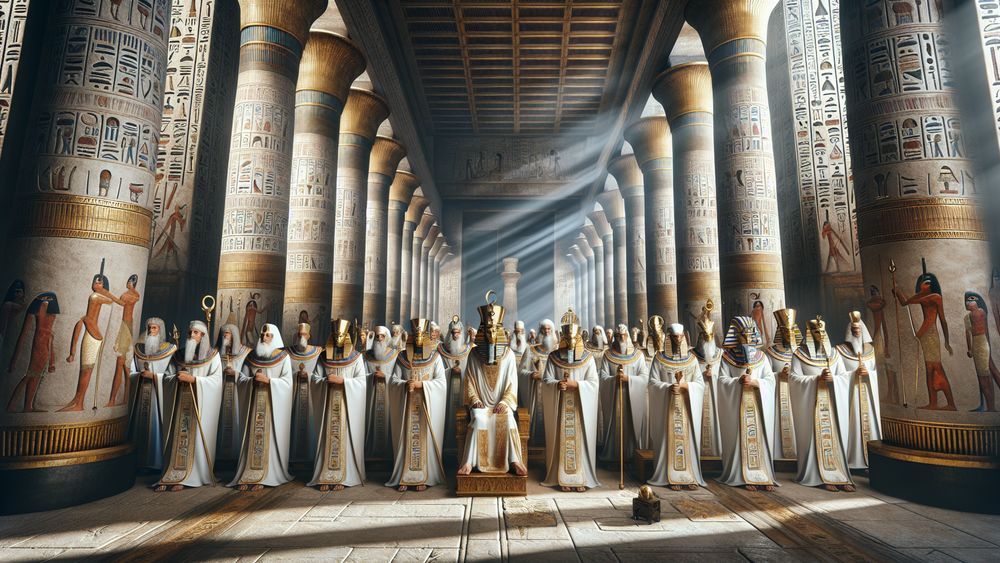
They have a lot of wealth and land which gives them a strong base to influence and make decisions. This wealth isn’t for show; it funds massive building projects and religious events which boost their standing even more. Moreover, they cleverly marry into influential families and snag top jobs which mix their interests with those of the rulers.
Thus, they’re more than spiritual leaders; they’re power players, making moves that keep them at the forefront of both religion and politics in Egypt.
Conflict and Reconciliation with Pharaoh Akhenaten
When Pharaoh Akhenaten takes the throne, he shakes up Egyptian religious life. He pushes for the worship of Aten, a sun deity, sidelining other gods, especially Amun. This move hits the priests of Amun hard. They have built up a lot of power and wealth around Amun’s cult. Yet, they don’t sit back.
They push back, aiming to keep their influence and keep Amun in the game. Their efforts pay off after Akhenaten’s time on the throne ends. Amun’s worship bounces back. This whole episode leaves a mark on Egyptian religion and its political landscape. It’s a clear show of how traditional religious practices can hang on and even come back strong after being pushed aside.
And it really puts a spotlight on how savvy Amun’s priests are at playing the long game in politics and religion. This story is all about the tug-of-war between change and tradition and how, in the end, tradition finds a way to stick around.
- Akhenaten’s religious reforms don’t simply tweak the status quo; they flip it on its head by setting up Akhetaten (what we now call Amarna) as the center stage for Aten and sidelining other deities.
- The priesthood of Amun doesn’t throw in the towel when faced with Akhenaten’s changes. Instead, they lie low, keeping their traditions under wraps until Akhenaten’s death, after which they make their move and bring Amun back to the top.
- The impact on Egyptian religion and politics is huge. The quick flip back to traditional practices and gods after Akhenaten’s rule and the erasing of his monotheistic push from official records and monuments show how resilient and adaptable the religious and political systems are.
Pharaoh Akhenaten’s radical religious reforms are met with resistance by Amun’s priests, who ultimately succeed in restoring Amun’s worship and influence after Akhenaten’s reign, demonstrating the resilience and adaptability of Egyptian religious and political systems.
Amun Beyond Egypt
While Amun’s influence and worship indeed sit at the heart of Egyptian culture and politics, they stretch far and wide. They indeed touch regions and cultures outside Egypt’s borders.
Amun’s Influence in Nubia and Sudan
Amun makes a big splash, way down south in Nubia and Sudan. This happens when Egypt has its hands on the steering wheel in these places. Amun doesn’t stay put; he becomes a top-tier member of the local god squad. They build him some pretty standout places, like the Jebel Barkal temple in what we now call Sudan.
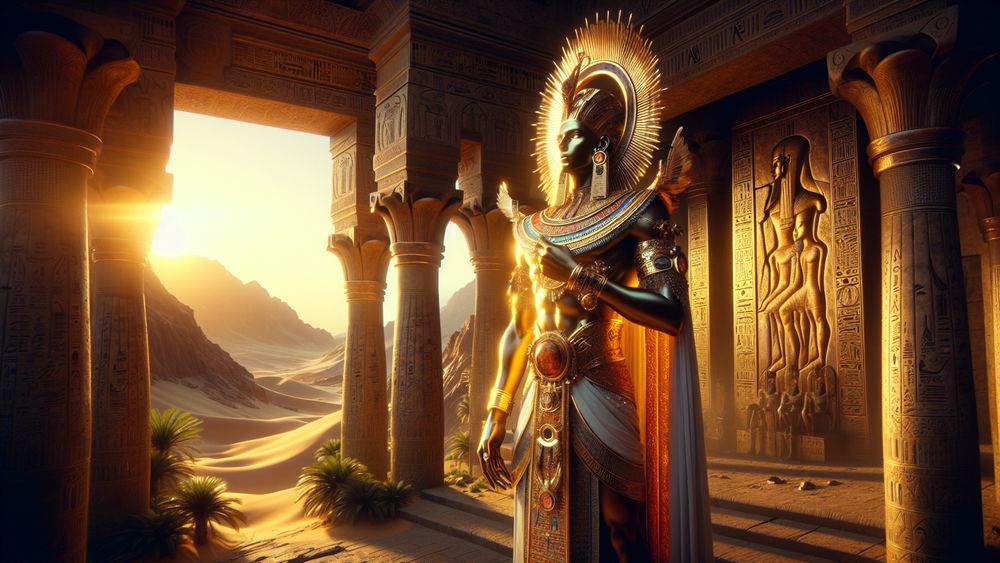
It’s a huge nod to how much they respect him and also how Egypt likes to leave its mark. Amun isn’t there for kicks; he’s a heavyweight symbol of the pharaoh’s might and Egypt’s grip on these lands. Even when Egypt’s day in the sun starts to set, Amun sticks around in Nubia and Sudan.
The proof is in the pudding, with all the digging and history books pointing to a long-lasting devotion to Amun in these spots. It really spells out how Egyptian culture and beliefs don’t fade away but rather keep on shining, influencing neighbors for a long while.
Connections to Other Cults and Deities
So, when we talk about Amun, it’s pretty clear that his influence doesn’t stay put within Egypt’s borders. It reaches out and touches the religious practices and godly line-ups of the neighbors. Specifically, Amun finds buddies in deities from places that are right next door, like Nubia. Here, he gets mixed up with Apedemak, who is this lion-headed warrior which folks there already know and respect.
This mixing of gods isn’t unusual but rather a smart way to keep peace and show respect between different people’s beliefs. Also, if we look towards the Libyan Desert and some oases, Amun again makes friends with the local spiritual beings. This fact really shines a light on how flexible and widespread Amun’s worship is.
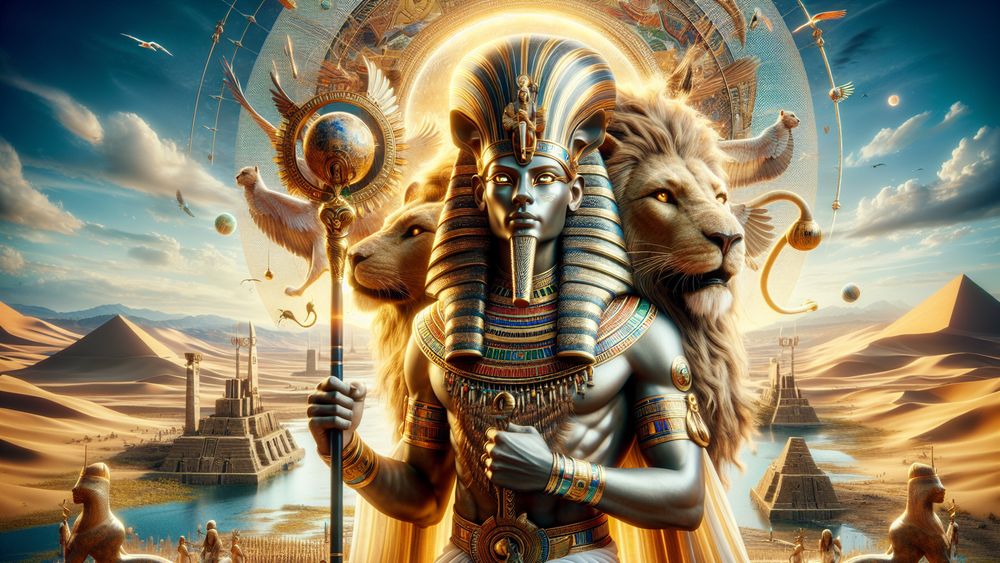
It’s like, wherever you go that’s somewhat close to Egypt, you find traces of him, which is quite the feat for an ancient deity. This whole blending and sharing of gods between cultures? It’s a solid example of how religions can adapt and evolve while keeping everyone somewhat on the same page.
Pantheon of All the Egyptian Mythology Gods
The world of Egyptian mythology packs itself with a wide array of gods and goddesses, each holding dominion over different parts of existence and the afterlife. You’ve got Ra, who takes charge of the sun, while Osiris rules the underworld, and Isis offers her protection widely.
This diverse group, which includes both major and minor deities, indeed makes for an engaging study. For those who seek to dive into the depths of these divine entities, a detailed exploration awaits here. It indeed lays out everything one needs to know about these figures that sit at the very heart of what the ancient Egyptians held sacred.
FAQs
1. How did Amun rise to prominence in ancient Egyptian religion?
Amun makes his way to the top in ancient Egyptian belief systems mainly because his followers in Thebes put him in the spotlight and, before long, he joins forces with the sun god Ra. This move shoots his status through the roof, making him a key player in the pantheon.
2. What are the key symbols and attributes of Amun?
Amun often appears with a ram and goose by his side, which directly link him to the natural world. He also wears a tall plumed headdress, which isn’t for show but rather signifies his connection to the air and his unseen nature. These elements, while simple, tell us so much.
They show that Amun is indeed a powerful figure within the pantheon, yet he remains somewhat of a mystery, hidden yet ever-present.
3. Can you explain the significance of the Opet Festival for Amun’s worship?
The Opet Festival plays a crucial role for Amun’s worship. It acts as a key event. This festival, indeed, strengthens the bond between the pharaoh and Amun. It does so by celebrating their unity. People see this unity as divine and essential for the kingdom’s stability. Thus, it’s more than a simple ceremony. It’s a vital connection point. It directly impacts how people perceive their leader and their god.
4. How did Amun’s cult survive the challenge from Akhenaten and his monotheistic reform?
Amun’s cult makes it through the challenge from Akhenaten and his push for worship of one god. How? Leaders after Akhenaten go back to old ways. They say yes again to many gods and especially to Amun. This move brings back traditional religious practices and beliefs. So, Amun’s followers see their faith and rituals come back strong.

